Table of Contents
How to lose weight and stay in shape is a modern-day struggle. As such, various ‘healthy diets’ often become a trend. The ketogenic diet, or keto for short, is an interesting approach that has become quite popular. It’s a high-fat and extra low-carb diet that seems out of place in the ‘war against fat.’ The keto diet is supported by proven benefits like decreased hunger and significant weight loss in some people. How exactly does keto work, and is it really healthy?
If you’re curious, this beginner’s guide to Keto Diets is exactly for you. Let’s dig in!
What is a keto diet?
A keto diet is a type of low-carb diet. It’s quite different from other low-carb diet plans such as paleo, Atkins, and South Beach. The key difference is the high-fat diet content coupled with a moderate intake of protein.
Essentially, this shift in core macro-nutrients triggers a different type of metabolism which is similar to fasting. Among other low-carb diets, keto stands out for benefits such as epileptic seizure control and improved blood sugar management for diabetics (1, 2).
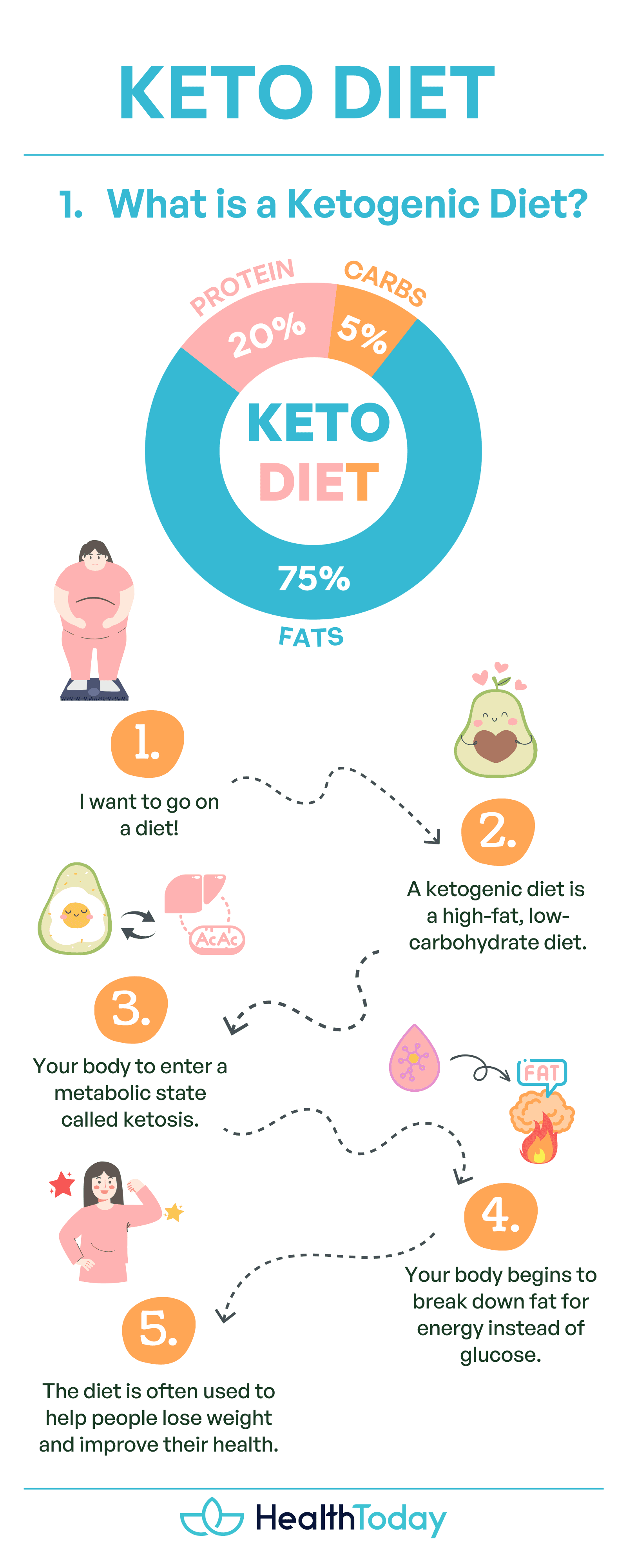
How does a low-carb diet like keto work?
Basically, the keto diet starves the body of its basic energy source of glucose sugars derived from carbohydrates. This forces the body to break down stored fat, releasing ketones as an alternative energy source (3).
This state, known as nutritional ketosis, can help you lose weight in the short term (4).
A strict ketogenic diet typically follows a protein + carbohydrate to fat ratio of either 4:1 or 3:1 (5, 6. This means for 1 gram of combined carbohydrate and protein, you must add 3 to 4 grams of fat.
Generally, for keto, the carb limit is 20 to 50 grams at the most in a single day (6). This amounts to half a burger bun, a whole plate of leafy vegetables, or about a medium-sized banana.
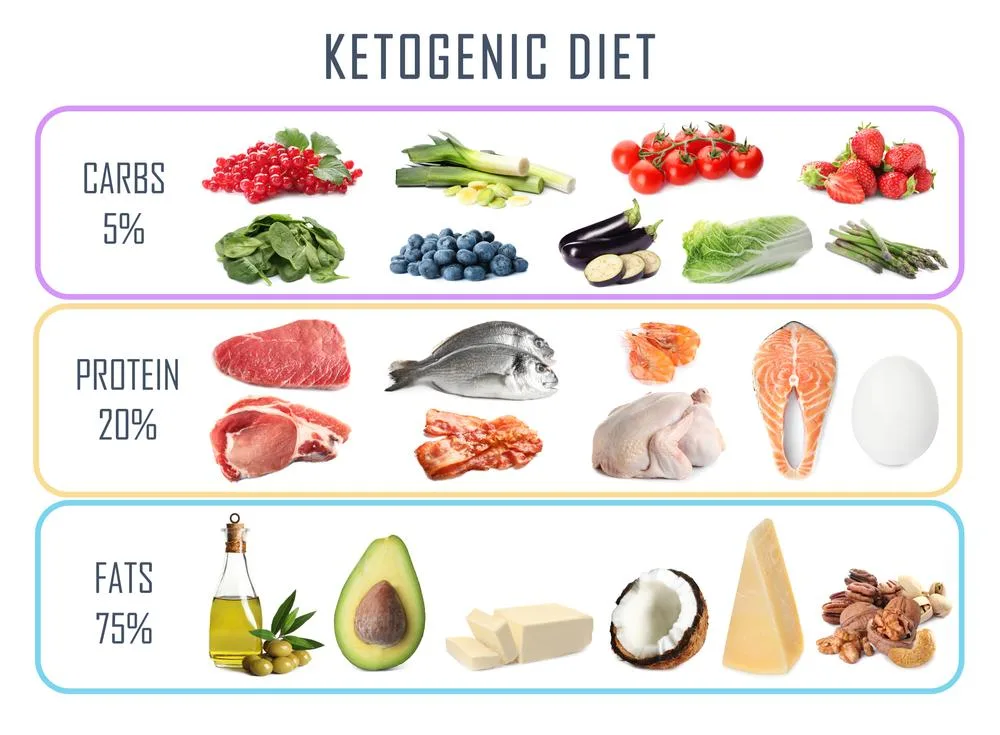
Is the keto diet safe and healthy?
The ketogenic diet is safe for most people since only small amounts of ketones are released without affecting the blood pH (7). However, it is still recommended to seek weekly, bi-weekly, or monthly professional advice for the safest keto journey.
Nutritionists would say keto is healthy in short. It has many clinically proven benefits, but long-term dieting is not sustainable. Adverse effects in the long term can vitamin and mineral deficiencies (8, 9).
How long does it take to reach ketosis?
Nutritional ketosis starts when the body begins to break down fat for energy instead of carbs. Generally, it takes about 2 to 4 days for the body to reach this state on a keto diet (10, 11).
In some cases, it can take longer than a week due to factors such as macronutrient and supplement intake, metabolism, and body mass index (7, 11, 12).
How to confirm your ketosis state?
Entering into ketosis is often characterized by bad or fruity breath, fatigue, nausea, headache, or constipation, which is often called “keto-flu.”. However, the best way to know for sure is to simply test the ketone levels in your blood, breath, or urine.
Urine strips: Urine strips are widely available and the cheapest test method. Their accuracy is not as good as other methods. Early morning or post-dinner urine gives the most reliable results (13).
Ketosis breathalyzer: The most convenient and non-invasive test. It measures acetones in the breath, so it is more reliable than urine strips. (14).
Blood ketone meter: The most accurate ketosis test. It measures the exact number of ketone β-hydroxybutyrate (BHBs), which is the most stable indicator studied (15). They are costly, and the method is more invasive.
The point of a keto diet is to remain as long as possible in a state of fat-burning ketosis. To induce ketosis 2 to 4 days after starting the diet. Although bad breath and other changes can be good indicators, there are tests you can do. A ketone blood meter is the most accurate option, while a urine strip is the cheapest.
Learn about the 7 types of ketogenic diets
Over the years, the ketogenic diet has been modified to suit different body types or lifestyles. This has allowed athletes, bodybuilders, and Hollywood superstars to get the most out of keto.
From seven types of keto diets, find out which is the right one for you:
Standard keto diet
The standard ketogenic diet (SKD) is what most people think about when they hear the word ‘keto.’ It typically follows a daily macronutrient balance of 70‒75% fat, 20% protein, and 5‒10% carbs (16).
Here is a simple macro conversion scale for 2,000 calories:
If you are following a 2 000 calorie diet like the above and know the ratio of your macro (I.e., fat 80% and carbs 10%), you can then calculate the daily value of that macro:
A gram of Macro=daily calorie Target Macro percentageCalories per Macro gram
Carb intake example:
Total grams carbs intake =2000 cal10/1004 cal/gram = 50 g carbs
The SKD is the basis of other ketogenic diet plans, which may adjust the ratio percentages of fat, protein, and carbs or require a different calorie target.
High protein keto
The high-protein ketogenic diet (HPKD) is often favored by weightlifters for its higher protein intake to the bulk muscle (17). Instead of 100 g of protein intake a day, they can have 150 g! It maintains the same daily value carb intake as the standard keto diet (SDK).
The magic numbers for HPKD are 60‒65% fat, 30% protein, and 5-10% carbs.
The perk of following HPKD over SKD is the lower fat content (by 10%). Some people worry about SKD because of its high-fat content (70-80%), while HPKD is more flexible.
Cyclical keto
The cyclical ketogenic diet (CKD) involves alternating cycles between low-carb weekdays and high-carb weekends. It’s best for people who want to sustain a long-term keto lifestyle and is also suitable for bodybuilders.
The goal is to burn fat, lose weight on low-carb days, and increase glycogen levels with a 1‒2 carb loading phase on the weekends (18). Since muscles rely on glycogen from carbs as fuel (19), bodybuilders modify the SKD to maintain performance while staying in ketosis.
Targeted keto
The targeted ketogenic diet allows unprocessed carbohydrates within a 30-minute window of an intensive physical workout (20). This is to increase stamina and prevent muscle loss. It follows the same logic as CKD. How many carbs you eat depends on the type, duration, and intensity of the workout.
Dirty vs. clean keto
Clean keto emphasizes eating whole or minimally processed foods. Dirty keto is a kind of lazy keto where you can skimp on whole foods. The drawback to ‘dirty keto’ is that you may lose weight a little slower and possibly miss out on nutrition.
Mediterranean keto
The Mediterranean diet is celebrated as one of the healthiest diets in the world. It reduces the risk of cardiovascular diseases, obesity, and cancer (21).
The diet favors a high intake of vegetables, olive oil, nuts, and cereals. At the same time, it permits a moderate amount of fish, poultry, and red wine. Basically, it favors polyunsaturated fats over saturated fats in red meat and dairy.
As such, it’s a good basis for the ketogenic diet while improving overall health, weight loss, insulin sensitivity, and cognitive function (22). As per usual, the daily net carbs should not exceed 50 grams.
Different types of keto diets are used extensively around the world. They only differ in macronutrient ratios. Targeted keto has carb-loading periods and suits athletes and bodybuilders. Clean keto emphasizes whole foods, while ‘dirty keto’ is more flexible. Mediterranean keto is a kind of ‘clean keto’ best for people who prefer seafood over animal meats.
Foods to eat on a keto diet
We look at seven food groups to pick out the best keto diet choices: seafood, vegetables, meat and poultry, dairy, fruits, nuts and seeds, and healthy fats.
Find out which foods are keto-friendly!
Seafood
Seafoods of any kind are keto diet friendly. Of course, fatty fish like salmon, mackerel, and sardines are the best. Other good choices are crabs, lobsters, mussels, scallops, shrimp, squids, and octopus.
Vegetables
Not all veggies have the same nutritional content. For example, carrots and beets aren’t keto-friendly due to their high carbohydrate content.
Here are some of the best low-carb vegetables for a keto diet (23). They include cabbage, broccoli, cauliflower, onion, spinach, tomato, cucumber, bell pepper, mushroom, and eggplant.
Meat and poultry
In a keto diet, you are free to choose any type of meat that you want. Red meats like beef, pork, and lamb tend to have the most dietary fat.
Undoubtedly, keto dieters would opt for flavorful fatty cuts of meat rather than lean ones. For a fatty steak, choose a more marbled meat.
The most favored slab of meat is the rib-eye steak. It contains more than 20 grams of dietary fat per 100 grams (24). Some other options include a rack of beef, pork ribs, New York strip, or lamb chops.
Dairy
Different dairy products have distinct health benefits. Even though cheeses and yogurt are all byproducts of milk, their nutritional content differs.
Sour cream, heavy cream, butter, full-fat milk, and yogurt are a wonderful fit for a ketogenic diet plan (25). Full-fat cheeses and better than low-fat ones, but be wary since some are high in carbohydrates.
Here we list some low-carb, high-fat cheeses to make appetizing keto meals:
Fruits
Fruits and berries are nature’s desserts. On a keto diet, however, fruits are an occasional treat rather than an everyday staple. You can have them in limited quantities. Fruits and berries that are more keto-friendly are listed below (26):
Nuts and seeds
Nuts and seeds can be eaten raw or used to enhance the texture and flavor of dishes, including salads. Many of them are low in net carbs and high in healthy fats—making them a perfect choice for keto-dieters.
Some nuts and seeds that you can have are flax seed, sunflower seed, pumpkin seed, pecans, Brazil nuts, and macadamias.
Healthy fats
When it comes to nutrition, not all fats are equal. Some fats provide better satiety and keep you feeling full longer. These types of healthier fats include coconut oil, olive oil, Medium Chain Triglycerides (MCTs), and fish oil (27).
For chocolate lovers, 85% cacao or more is perfectly legal in a ketogenic diet!
Keep in mind that it’s not just the keto-friendly foods that influence your ketone levels. The amount you eat and your level of physical activity play a role in successful keto.
There are a variety of seafood, meat, and poultry to choose from for a keto diet. For vegetables and dairy, you should choose low-carb options. You also need to be selective about fruits and oils, but nuts and seeds are an easy choice.
Foods to avoid on a keto diet
Carbohydrates are a plague because they can easily break your ketosis. Carbohydrates come in various forms, but the most abundant are sugars, fibers, and starches.
Certain prototypical foods are usually avoided in ketogenic diets for their high carbohydrate count. Because they are healthy, but you can include them in small portions:
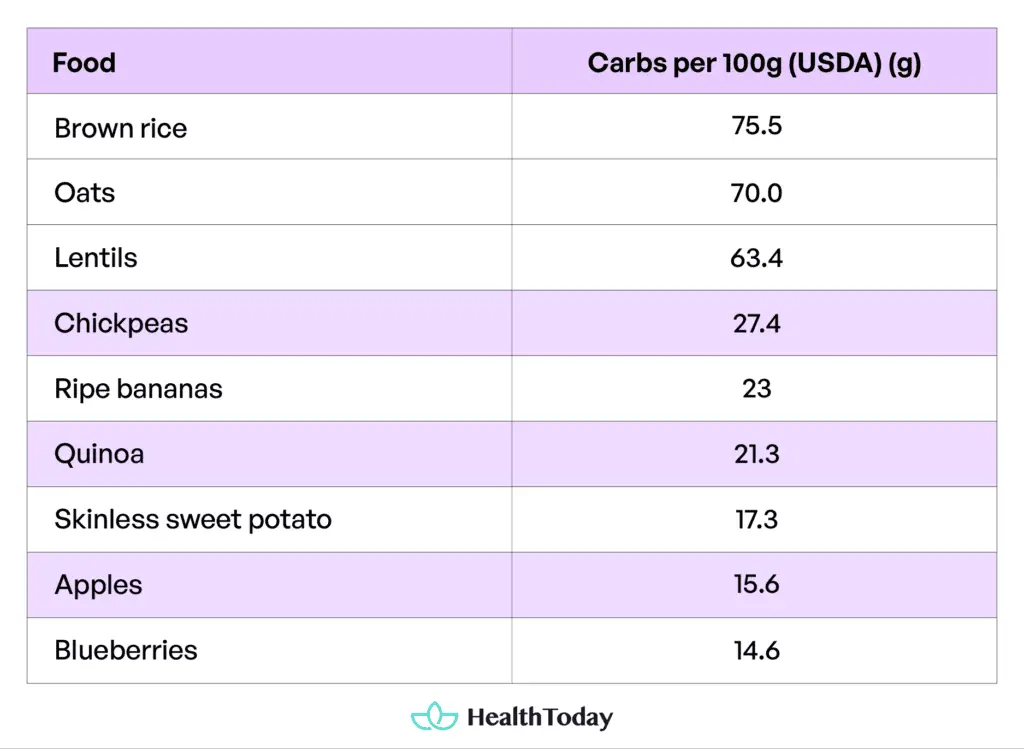
In a keto diet, it is a general rule to avoid all kinds of carbohydrates due to the risk of breaking ketosis. Carbs are found in starchy, fibrous, or sweet foods, but you should be selective and choose those with better nutritional value.
Medical health benefits of the keto diet
Keto is more than just a weight loss diet. There are also a number of proven medical benefits. These are primarily for type 2 diabetes and certain types of epilepsy. There are emerging findings on Alzheimer’s, Parkinson’s, and some forms of cancer (28, 29, 30).
Diabetes
Doing the ketogenic diet short term can be an effective option for people with type 2 diabetes (31, 32). Benefits include weight loss, reduced blood sugar levels, and improved insulin sensitivity. In clinical trials, keto has even reduced the need for medications (33).
As for type 1 diabetes, results are not so forthcoming. Regardless, as a diabetic, you should seek medical advice to see if keto dieting is the best for you.
Epilepsy
Before people used the keto diet to lose weight, it was first recommended for epilepsy (34). This is because ketone bodies act to stabilize neuronal membranes. A ketogenic diet is usually recommended for patients with refractory epilepsy and epileptic encephalopathy. These are cases in which surgery or medication is not an option.
Potential risks and side effects
Low-carb diets like keto can lead to a loss of nutrients typically found in carbohydrate foods. For this reason, a prolonged keto diet could lead to nutrient deficiencies (35). Specifically, this could affect fiber, calcium, magnesium, potassium, and vitamins A, B, and B6.
Some obvious side effects that could show at the onset of a keto diet are (36, 37):
Dehydration: Carbs need water for storage, but fats don’t. On a ketogenic diet, the body stores less water, which can cause dehydration.
Constipation: Dietary fiber adds volume to the stool and eases bowel movements. A low-fiber diet can lead to constipation or irritable bowel syndrome (IBS).
Skin rash: This type of ‘keto rash’ is distinctively red with slightly raised lesions. It’s itchy and usually appears on the chest and back. Fun fact—this is also known as Prurigo Pigmentosa.
Keto flu: Sudden dietary changes can surely cause the body to respond differently. Symptoms can include headache, sugar cravings, insomnia, irritability, fatigue, nausea, and brain fog.
In some instances, ketogenic diets can lead to complications from toxic buildup and an unbalanced diet. These include the build-up of kidney stones, poor bone health, the onset of cardiomyopathy, and hyperlipidemia (38, 39, 40).
When to avoid a keto diet
The bottom line is ketogenic diets are generally safe for most people in the short term. There are cases where it’s better to avoid keto and/or seek proper medical advice :
- Pancreas, liver, thyroid, or gallbladder conditions.
- Pregnant women and nursing mothers.
- Type 1 diabetes suffers.
- Cardiovascular disorders.
- Neuromuscular and neurodegenerative diseases.
- People who suffer from gout.
- Those with poor digestion.
Start today with our custom keto plans
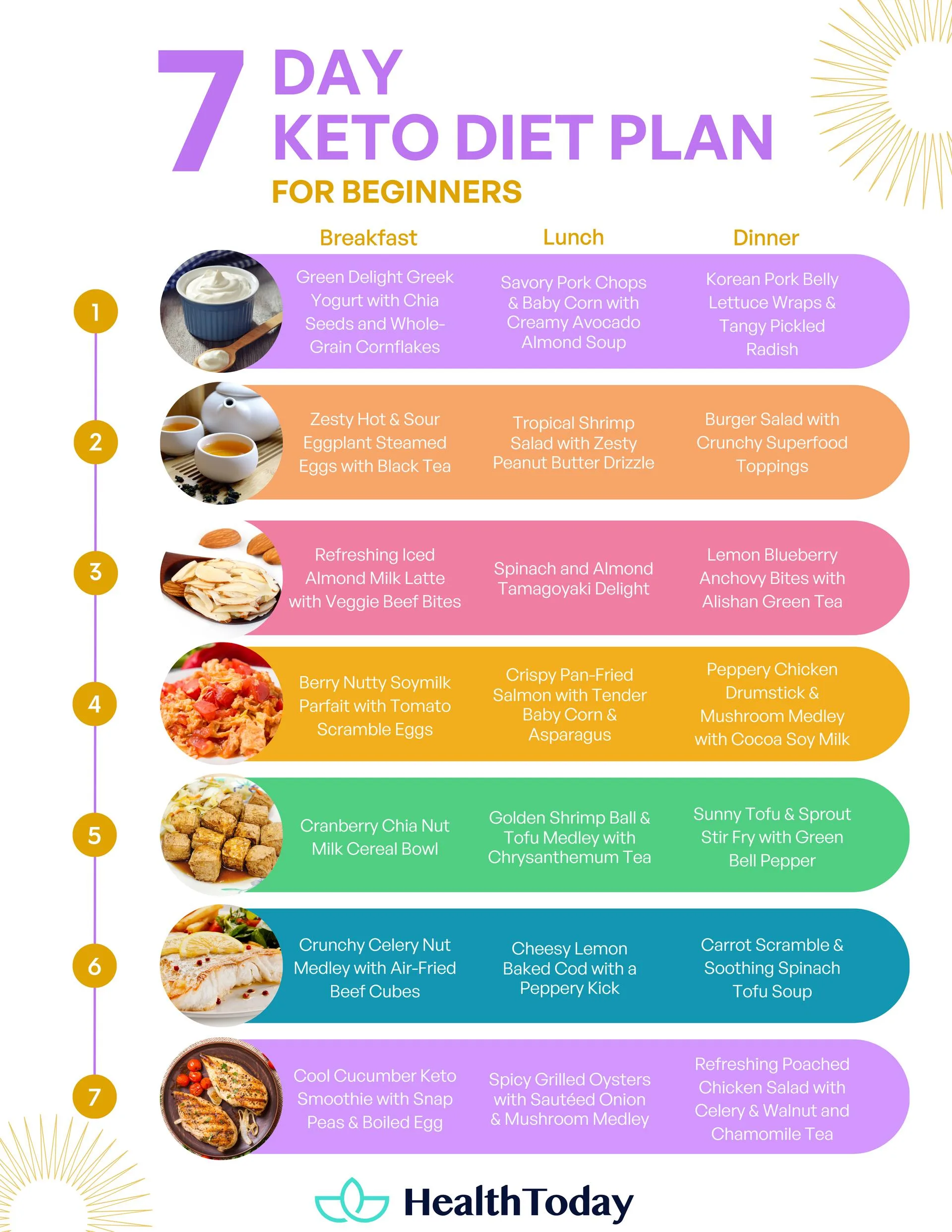
Try our FREE 7-Day meal plan! Carefully crafted by our nutritionists so you can safely and effectively kick off your keto journey! Includes delicious and easy-to-follow recipes.
Click to download!
1. How much weight can I expect to lose on a ketogenic diet?
Weight loss varies from person to person. However, according to experts, maximum weight loss occurs in the first 6 months (add reference), while the effects of the diet wane after this.
2. Is intermittent fasting mixed with a keto diet safe?
Combining a keto diet with 16/8 intermittent fasting is generally safe. However, whole-day fasting and 5:2 intermittent fasting with keto is not recommended. People with chronic diabetes, cardiovascular disease, pregnant women, lactating mothers, and those with eating disorders should avoid mixing diets.
3. What are the long-term consequences of a keto diet?
The primary concern of keto, and other low-carb diets, is nutrient deficiency. Foods rich in nutrients and fiber, such as whole grains (brown rice, quinoa) and fruits, tend to be avoided because of carbs. This may lead to complications in the GI tract and the liver in the long run.
4. What are the benefits and disadvantages of a ketogenic diet?
The chief health benefits are weight loss, improved blood pressure, controlled blood glucose, and better satiety. However, ketogenic diets, and other low-carb diets, can lead to nutrient deficiency, gut and skin problems, and dehydration.
Summary
Keto tips to keep you going:
Start small! There’s no need for a 180-degree lifestyle flip. Begin with one low-carb, high-fat meal per day. Gradually increase to two and then three meals.
Keep our printable keto-friendly grocery list on hand! This list is curated by our experts based on easily available foods in supermarkets worldwide.
Get to know your foods. Familiarize the macronutrient content of your favorite foods. This can help you easily pick the right ones.
Keep temptation at bay! You may crave sweets on keto, but be headstrong. Go for keto-friendly snacks and avoid processed foods.









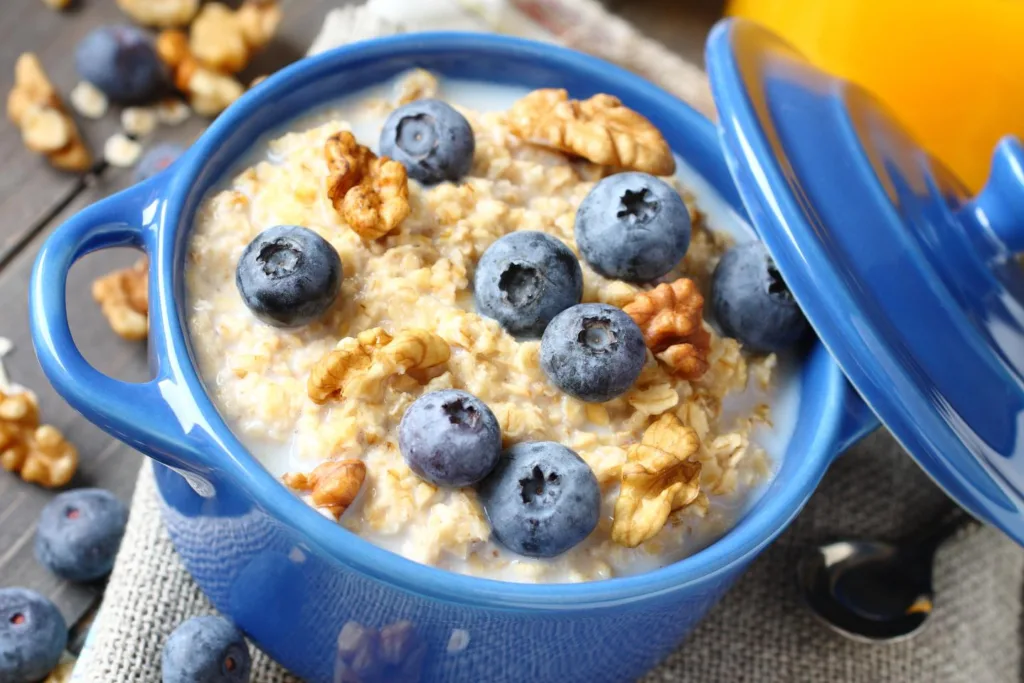





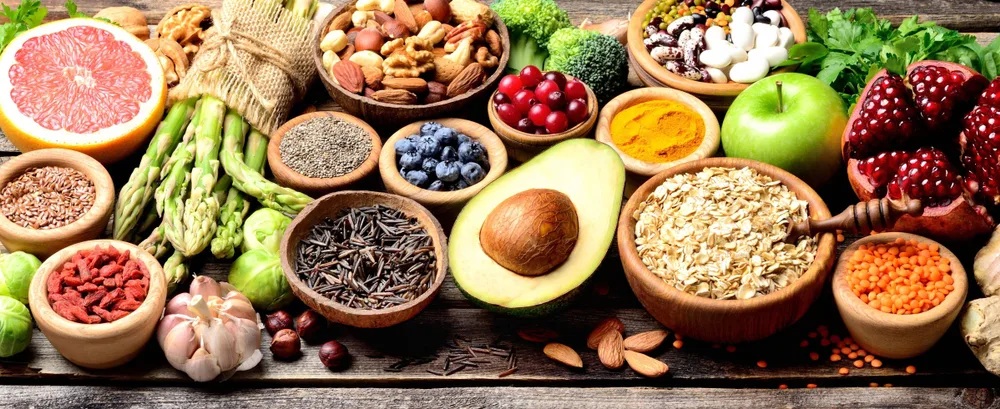

Comments
0